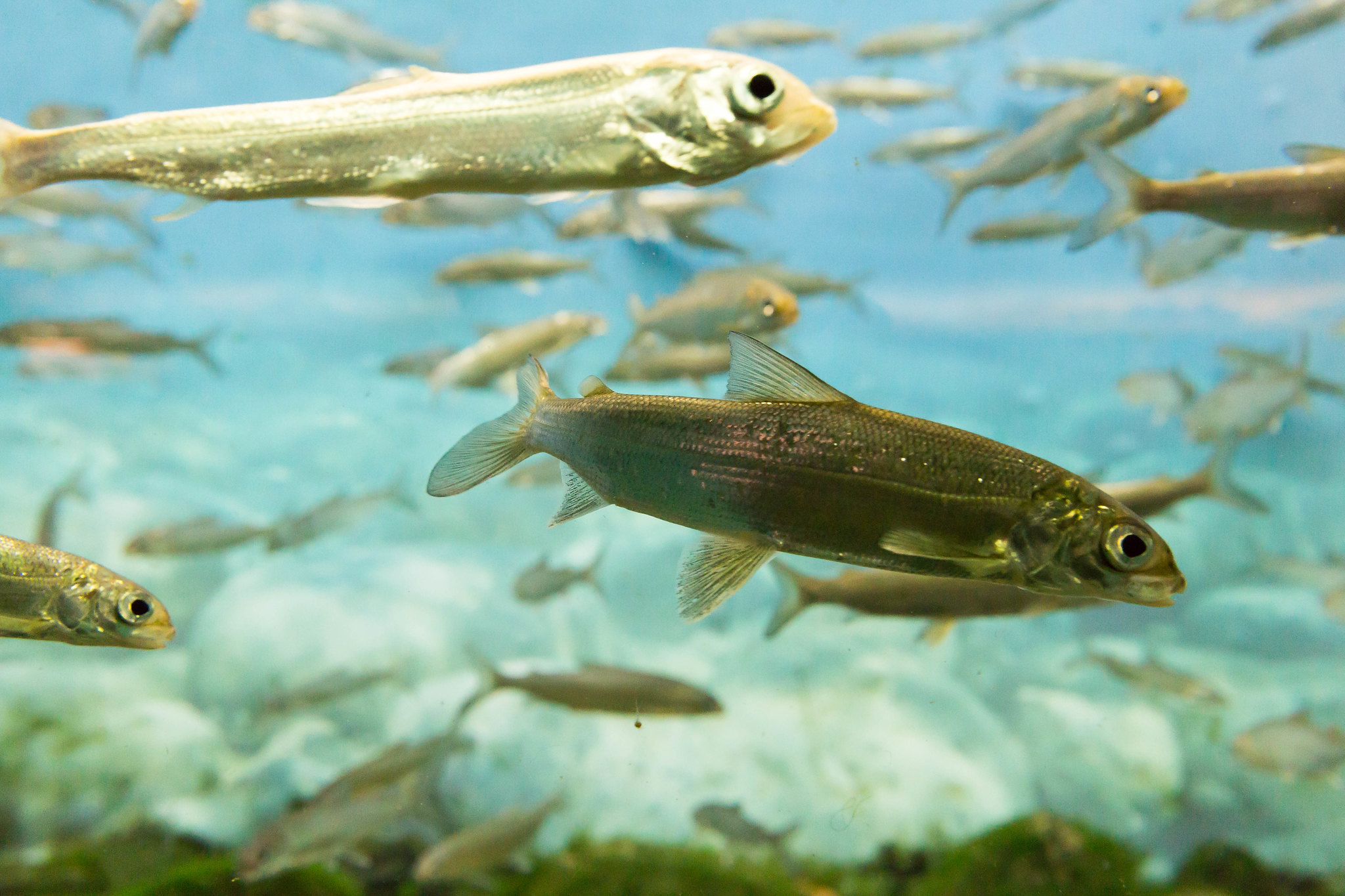
Lake whitefish. Photo by Marco Verch, Flickr.
A physiological explanation and an evolutionary explanation related to the moment fish become sexually active – and spawn for the first time – have turned out to be two sides of the same coin, new research has found.
In a paper published in the Journal of Fish Biology, researchers at Western University and the Sea Around Us initiative of the University of British Columbia’s Institute for the Oceans and Fisheries suggest that there is complementarity between the physiological explanations provided by the Gill Oxygen Limitation Theory (GOLT) concerning the moment individual fish ‘decide’ to spawn and the explanations related these individual decisions at the level of populations provided by Life-History Theory (LHT).
To reach their conclusions, the researchers linked a couple of invariant ratios proposed by each theory.
The Gill Oxygen Limitation Theory proposes that freshwater and marine fish make the juvenile-to-adult transition when they reach a metabolic ratio of oxygen consumption of 1.36. That is, their body-weight-specific oxygen-uptake capacity is about 1.36 times higher than is required for the maintenance of that body and its functions.
In other words, what makes growing fish spawn for the first time is an increase in oxygen stress. This means that as they get bigger, there is a tension between the growth of their two-dimensional gill surface area – which limits the supply of oxygen to a fish’s body – and the growth of their tridimensional body – which generates the oxygen demand. This process triggers a hormonal cascade that leads to gonad maturation and spawning.
From a population perspective, on the other hand, Life-History Theory has found that there is a constant ratio between the size at which fish spawn for the first time in relation to a statistical function of the size they would reach if they grew indefinitely.
This constant ratio is related to the optimal age at maturity, which is an evolutionary trait that allows fish to ‘decide’ what is the ideal age to spawn for the first time by making a compromise between maturing early to maximize the number of times they can breed before dying and maturing late to reap the fitness benefits of being larger when they first reproduce.
To prove the connection between these two seemingly disconnected notions, co-authors Yolanda Morbey and Daniel Pauly compared data from 14 fish species with 12-106 observations per species and also looked at what happens with different populations of the same species, in this case, lake whitefish (Coregonus clupeaformis), common in North America’s cold lakes.
In all the cases, they found consistencies between the ratios proposed by the GOLT and LHT.
“We achieved some success at bridging both perspectives, which we feel follow parallel trajectories,” Morbey, a professor at Western University, said. “By showing that the two theories are complementary, we help bridge proximate and ultimate perspectives on what causes the juvenile-to-adult transition in fishes.”
The paper “Juvenile-to-adult transition invariances in fishes: perspectives on proximate and ultimate causation” appeared in the Journal of Fish Biology http://doi.org/10.1111/jfb.15146

